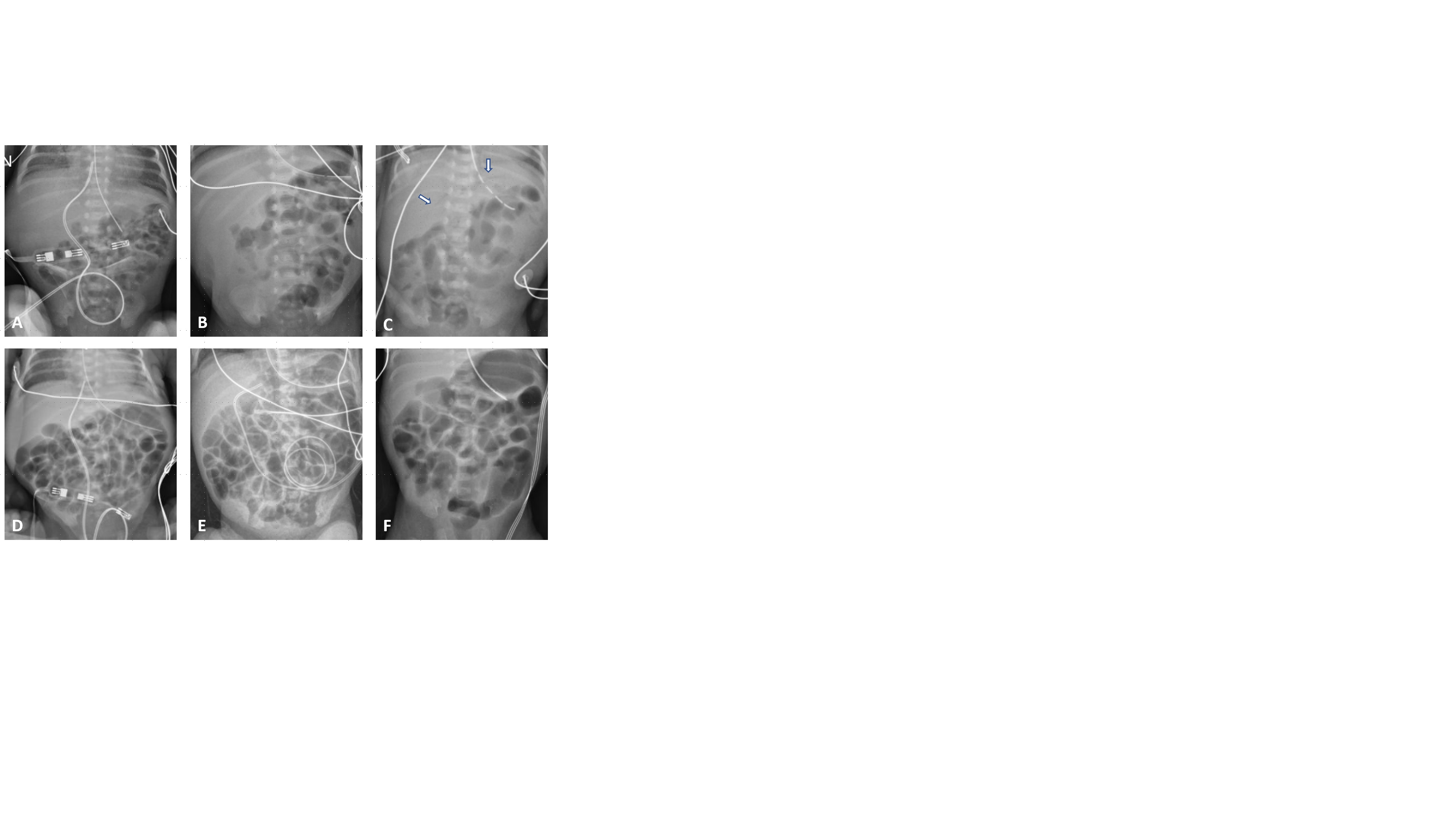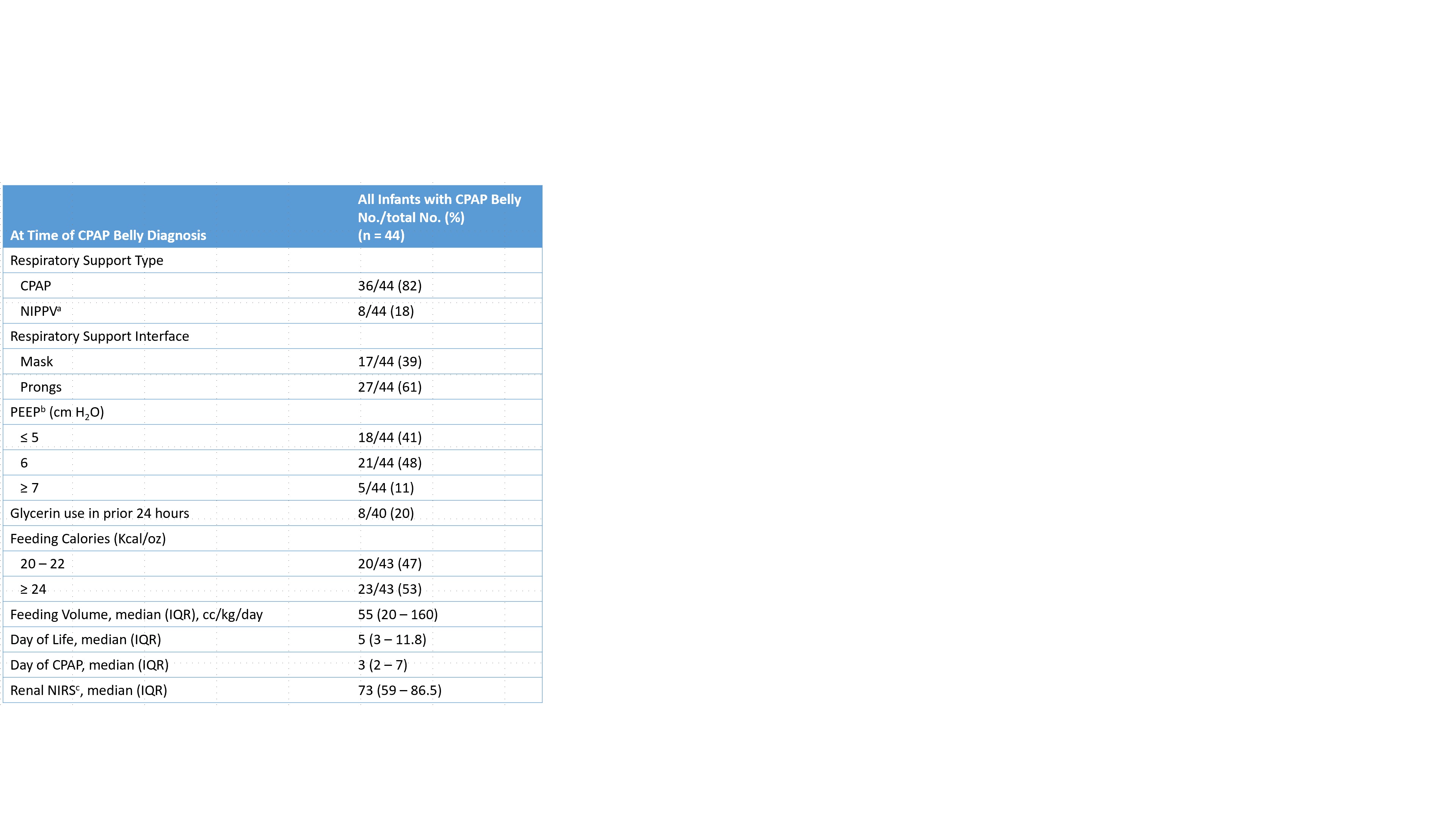Neonatal Respiratory Assessment/Support/Ventilation
Neonatal Respiratory Assessment/Support/Ventilation 3: Physiology 2 and Clinical Outcomes
354 - A Study to Characterize Continuous Positive Airway Pressure (CPAP) Belly Syndrome in Preterm Infants in the Neonatal Intensive Care Unit (NICU)
Publication Number: 354.346

Hannah S. Gu, MD (she/her/hers)
Neonatology Fellow
Lucile Packard Children's Hospital Stanford
Palo Alto, California, United States
Presenting Author(s)
Background: Continuous positive airway pressure (CPAP) Belly Syndrome describes gaseous enteric distension caused by noninvasive respiratory support in preterm infants. Clinically, CPAP Belly Syndrome (CBS) creates diagnostic challenges leading to pauses in enteral feeds, antibiotic administration, and changes to respiratory support. Current management strategies for CBS are heterogenous, in part because it remains poorly characterized in the literature. To improve management, it is imperative to define this entity in a reproducible way and describe which infants are most at risk.
Objective: To quantitatively characterize CBS in a cohort of preterm infants in the NICU in order to determine its incidence and associated demographic and mechanical factors.
Design/Methods:
A retrospective chart review was performed of all infants < 32 weeks gestation admitted to the Stanford NICU in the first 28 days of life (DOL) from 1/1/2020 to 12/31/2021. Abdominal radiographs from the first 28 DOL were assessed by two clinicians (pediatric radiologist and neonatology fellow) in accordance with the classification system shown in Figure 1, with the ultimate designation assigned by the radiologist. Maternal and neonatal demographic data were collected, as well as mechanical factors present at time of CBS diagnosis. Key characteristics were compared using Fischer Exact tests for categorical variables and independent t-tests for continuous variables (p < 0.05 significance).
Results: 229 preterm infants < 32 weeks gestation were admitted to the Stanford NICU in the first 28 DOL. 95 were excluded, and 134 infants were included in analysis. 69 were classified as having no CPAP Belly, while 44 infants had CPAP Belly (18 mild, 16 classic, 10 plus). 21 infants had radiographs with additional findings (18 with unspecified pathology and 3 with NEC). Among the 73 abdominal radiographs classified (normal, CBS, or other pathology), interrater reliability between two investigators was 71%. Infants with CBS were born at a younger gestational age and had lower birthweights than infants without CBS (Table 1). The diagnostic radiograph was often obtained early in an infant’s life and early in the course of CPAP treatment. Most infants with CBS were receiving CPAP support via prongs at PEEP ≤ 6 and were on less than full enteral feeds (Table 2).
Conclusion(s): This study introduced an implementable definition of CPAP Belly Syndrome with adequate interrater reliability and revealed demographic and mechanical factors associated with CBS. This effort will inform interventions to reduce the effects of CBS in NICU infants.
.jpg)

